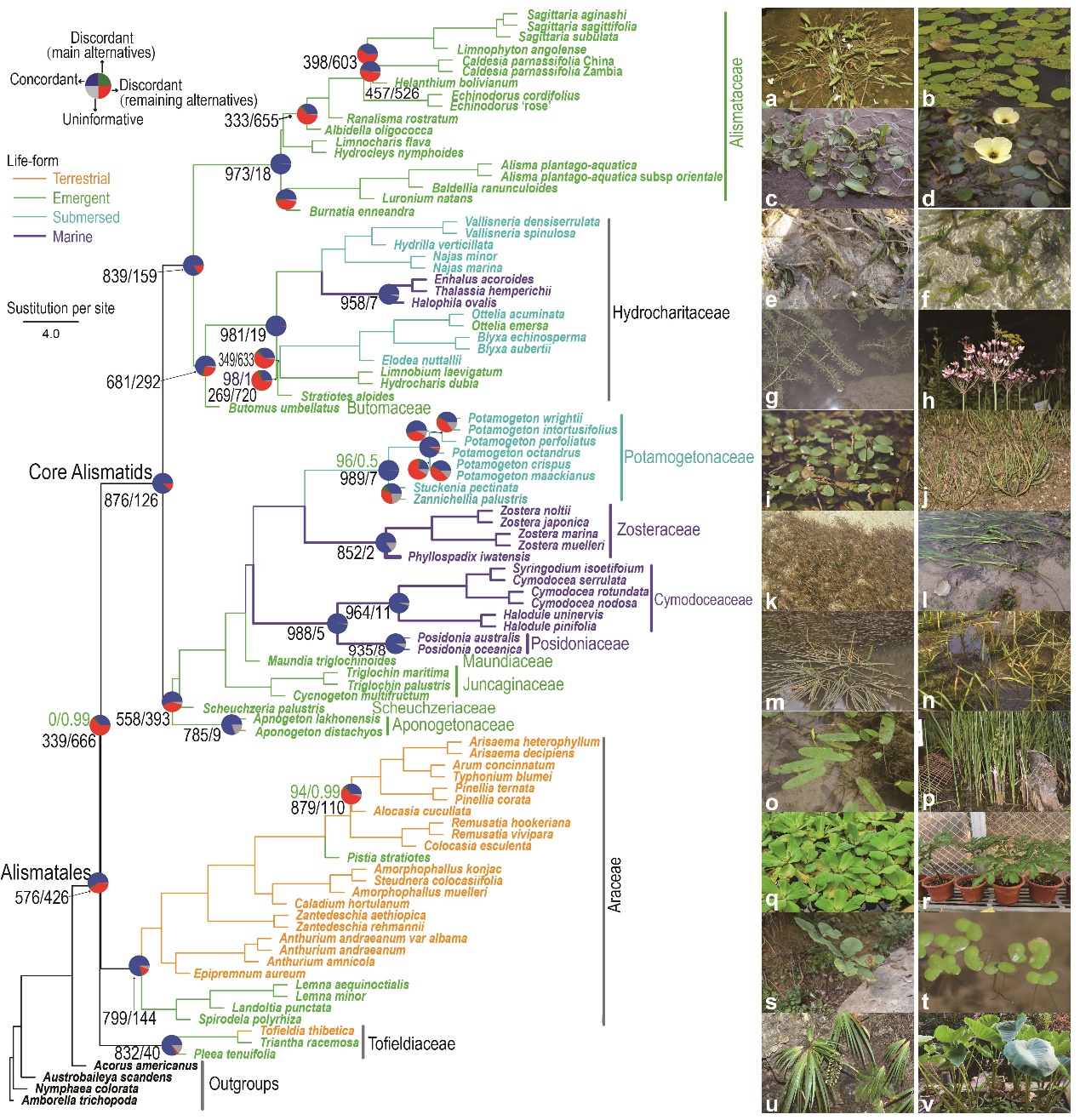The theory that life begins in the ocean is widely accepted. The public, on the other hand, do not acknowledge the reality that many aquatic organisms are descendants of terrestrial organisms. Whales and dolphins are marine mammals that develop from land mammals, while all higher aquatic plants evolve from land plants. There are great differences between the terrestrial, freshwater, and marine environments. What genetic changes took place with the evolution of plants from terrestrial to aquatic, and eventually to marine states?
A team of researchers from China led by WANG Qingfeng from Wuhan Botanical Garden, together with researchers from Germany and the United States, utilized Alismatales to explore plant adaptation to aquatic environments. Sampled 59 species of Alismatales from China, researchers compiled a data set that included 95 samples covering four genomes and 91 transcriptomes.
The species network inference and hypothesis testing recovered a relationship: ((Tofieldiaceae, Araceae), core Alismatids). Phylogenetic conflict among the three main clades could be attributed to incomplete lineage sorting and introgression. The analyses also suggested 18 candidate whole-genome duplication events in Alismatales, including one at the most recent common ancestor of core Alismatales.
Lineage and life forms were key factors affecting the evolutionary patterns for the genes related to freshwater and marine adaptation. Lineage-specific strategies included the loss of light-related genes in Zosteraceae that were retained in other seagrasses. Stomata-related genes were absent from submersed leaves. Nicotianamine synthase genes, which had a critical role under iron and zinc deficiency in plants, increased in submersed plants and seagrasses.
This study sheds light on the potential genomic mechanism involved in the evolution of early monocots and adaptation to aquatic environments.
Phylogeny tree of Alismatales (Images by CHEN Lingyun )
